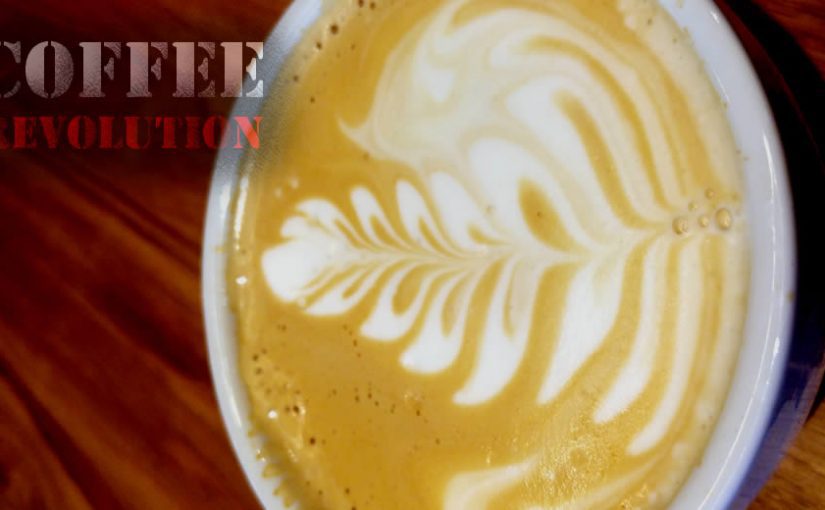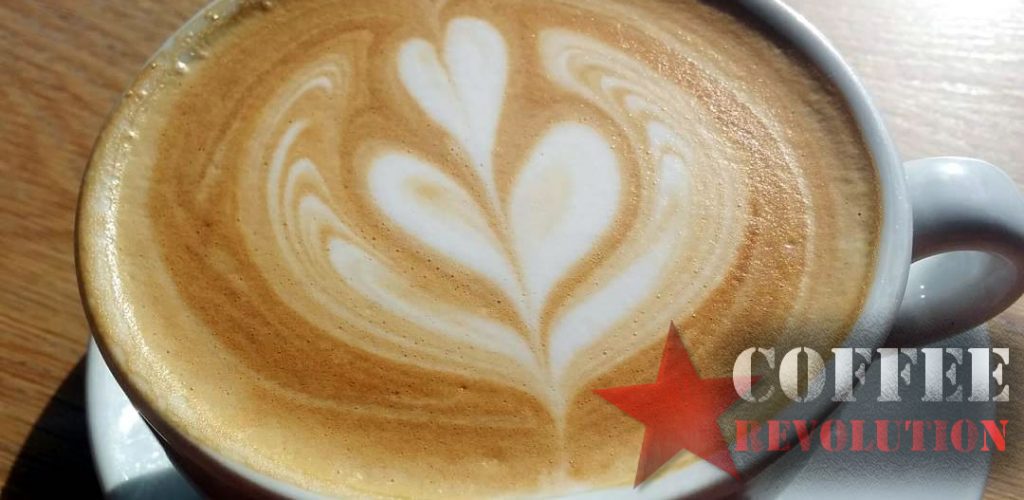Here we have some great examples of Latte art or coffee art.
These designs are made by getting the milk to the right micro foamed pour consistency and wiggling the milk into the coffee.
It takes practice both to get the milk right and to develop the correct pour and
flow technique.
Generally you’ll start to pour from high up to mix the milk and create a smooth light brown canvas. Then moving the jug from side to side and across the cup create the veins (this is quite a slow precise movement) then stream the milk up the middle to create the center vein.
The popular leaf design takes around 70 attempts before you get a feel for it and can do it consistently.
Please send us your photographs of latte art and we will include them here. email webmaster@ this website domain and mark it Latte art please (we will be happy to credit the barista or cafe by name).
In the world of espresso drinks, latte art is defined as beautiful patterns created by contrasting the white milk with the black espresso to create a striking contrast.
The trend began in the 1980s and 1990s, and latte art has continued to grow in popularity among professionals in the café industry as well as home baristas today. If you attend a café on a regular basis, the odds are good that you’ve had one of these beauties perched atop your coffee at some point or another.
However, creating these works of art is not a simple cakewalk; it requires the barista pulling apparently flawless espresso shots and steaming gorgeously smooth, velvety milk, both of which may take some time to master.
On top of that, mastering the technique might seem like it takes an eternity to truly get the hang of.
Latte art is something I have battled with for a long time until eventually achieving a reasonably excellent Rosetta the most of the time (see below).
flat-white
Starting with an espresso machine that is in fine working condition, your favourite coffee and milk (full-fat milk is the simplest to deal with when creating latte art), and a boiling pitcher, you will be ready to create your masterpiece.
Almost everything you would need to brew a conventional latte is available, as well as some patience.
Watch the video below a few times before doing it on your own, and then replay it once you’ve finished.
Depending on the espresso machine, here is where things may get a little complicated.
Professional broilers with two broilers are available.
If the machine has two broilers and is capable of steaming milk and pulling shots at the same time, this procedure will be much simplified, as neither the milk nor the espresso shots will have to wait for the other to complete.
One broiler and a few low-cost machines
If the machine has just one broiler, it is advisable to steam the milk first, and then extract the double shot of espresso from the machine.
How to make a leaf pattern out of steamed milk.
As long as you maintain spinning the steam wand in the milk in a circular motion, similar to how you would mix things with a whisk, the microfoam should remain equally integrated into the milk.
Many people find that a figure of 8 works well, however I find that whirling the milk jug and raising and lowering the steam wand will assist to vary the size of the bubbles formed.
To steam the milk, proceed in the same manner as you would for a latte, attempting to transform the majority of the milk into foam while concentrating on little bubbles — the microfoam is crucial to getting a smooth pour.
Overheating the milk may result in a sweet and somewhat burned flavour if you do so, so be careful not to go overboard.
The goal is to achieve a creamy texture by using milk that is densely packed with small micro bubbles.
If the milk does not create a little paper tearing sound just below the surface of the milk after 3 to 5 seconds, it is not aerated enough. The amount of time it takes to aerate the milk will vary on the espresso machine.
Placing your palm on the bottom of the pitcher will assist you in gauging the temperature of the milk; once it becomes too hot to keep your hand on it for more than a second or two, the milk will be approximately 150 degrees Fahrenheit and should have the consistency of wet white paint.
Although the idea is to have as few bubbles as possible, if there are a few larger ones, tapping the pitcher on the counter top can easily burst them.
The espresso shots should be prepared before the milk is steamed, and then as soon as the milk is finished, let some pressure to exit the machine before pulling the shots. This is especially true if the machine is only equipped with one boiler.
In the meanwhile, stir the milk in the pitcher to prevent the microfoam from segregating and separating.
Once the perfectly brewed espresso shots have been poured into the cup, grab the mug and pitcher in your hands and prepare for the most difficult aspect of the process: creating a Rosetta of espresso shots.
Holding the cup at an angle, pour the milk in a steady circular motion from a safe distance above, taking care not to move too rapidly. Holding the mug at an angle
Once the mug is half-full, stop the flow of milk and move the pitcher closer to the mug, wiggle it back and forth, making the side-to-side wiggles less and less far apart as you move the pitcher closer to you. Repeat until the mug is half-full.
If everything is done correctly, you will be able to see the wonderful design resting on top of the latte.
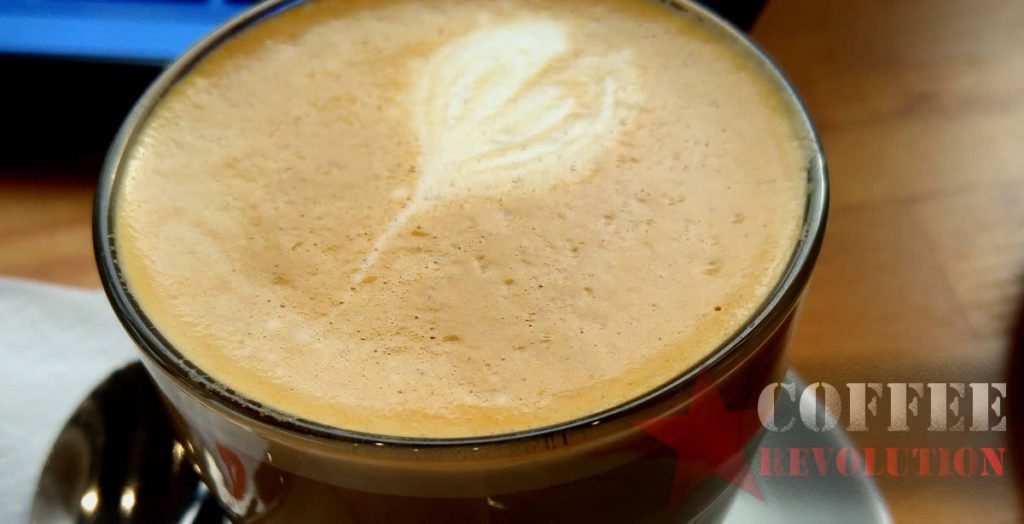
Cortado Art in Costa Sandwich, Kent.
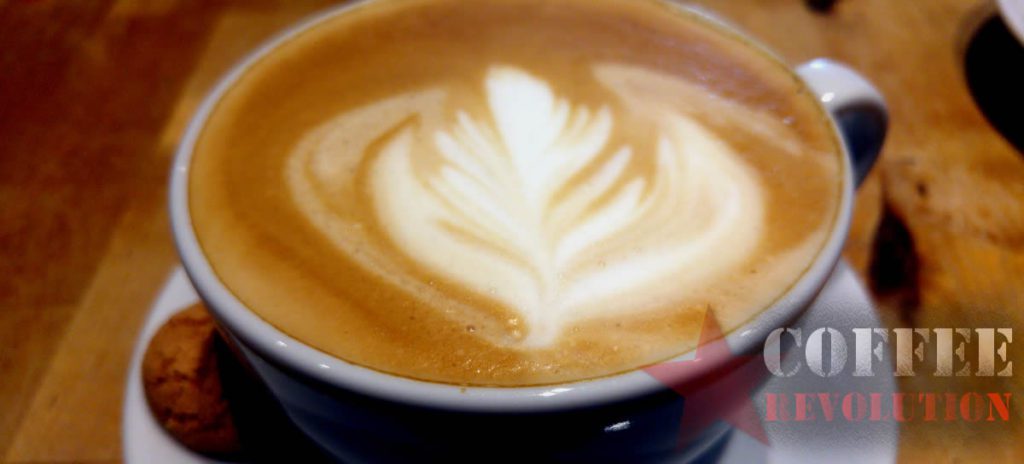 Produced by The Lane in Deal, Kent (my favorite local coffee shop)
Produced by The Lane in Deal, Kent (my favorite local coffee shop)
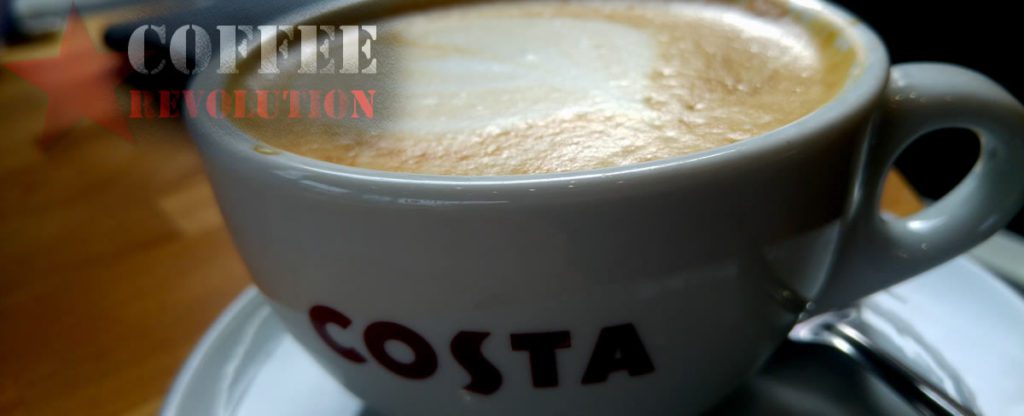
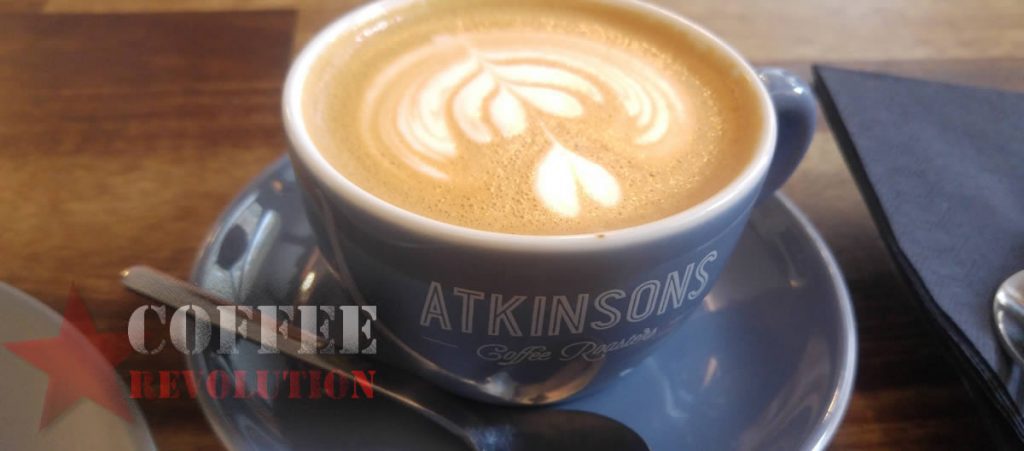
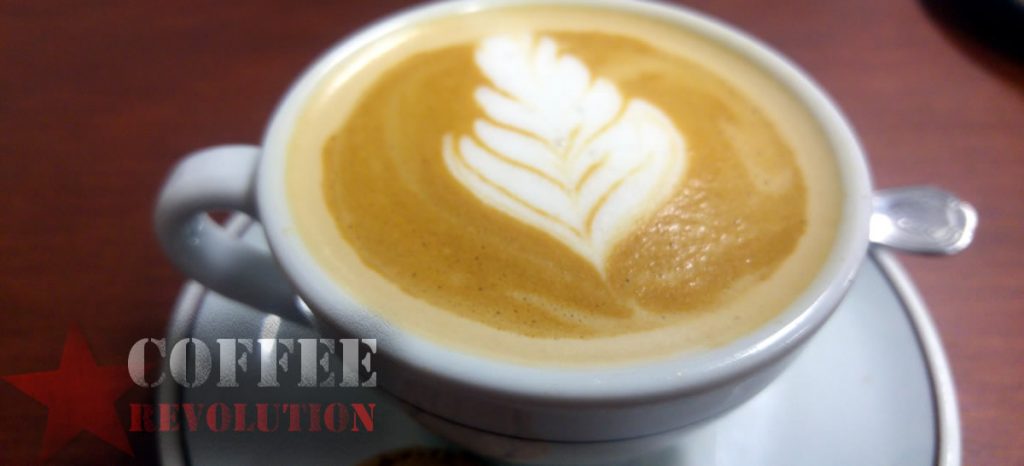
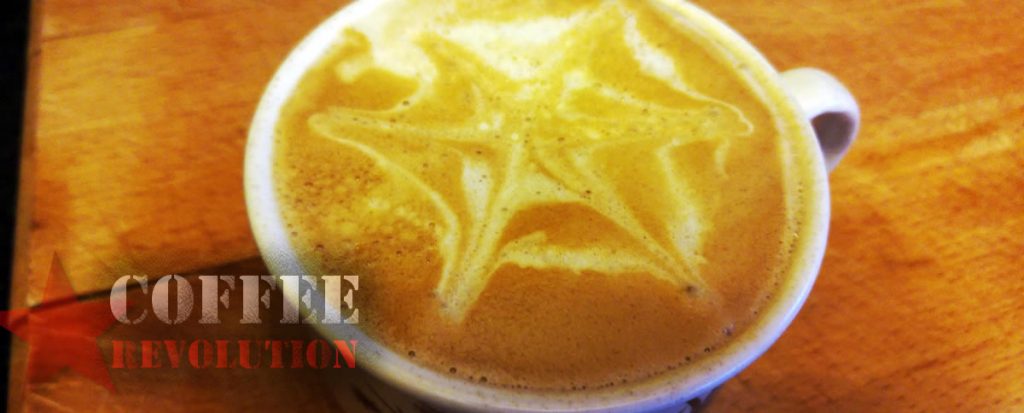
Spiders web- spiral the milk then drag it out with a stencil tool.
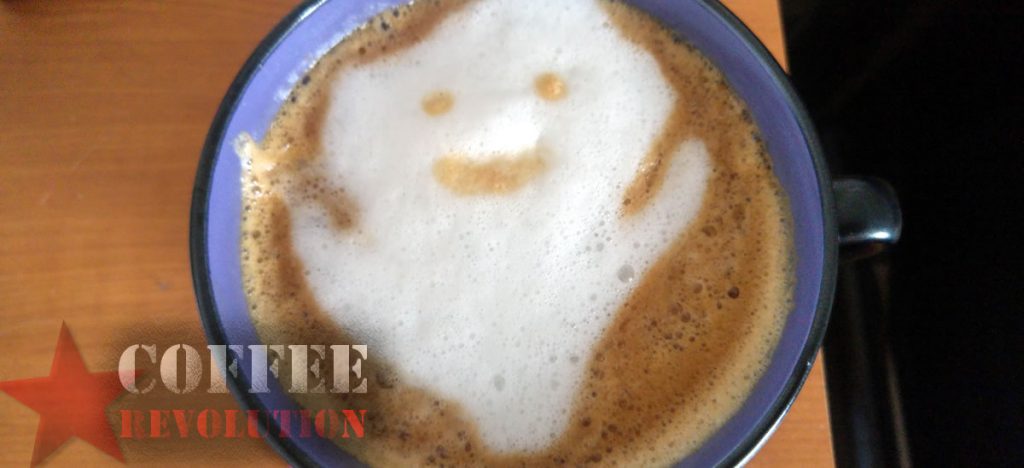 Or you could just make a smiley flower design!
Or you could just make a smiley flower design!
